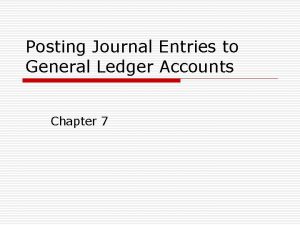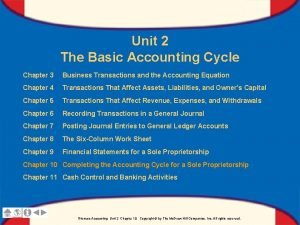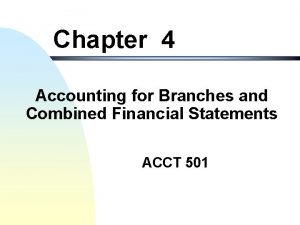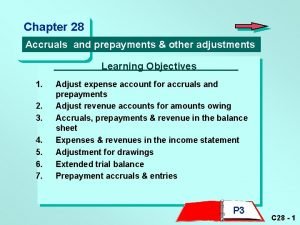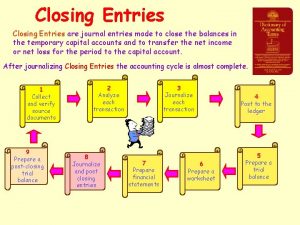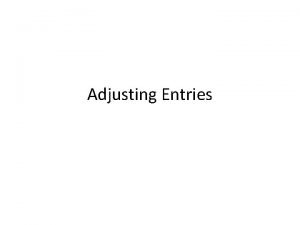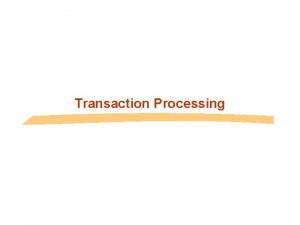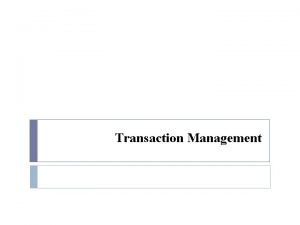Preparing and Posting Journal Entries Start with Transaction












- Slides: 12

Preparing and Posting Journal Entries

Start with Transaction Analysis � What we did on Wednesday: 1. Understand the Transaction 2. Identify the Accounts in the transaction (at least two accounts for each transaction) 3. For each account, identify the TYPE of account (ASSET, LIABILITY, STOCKHOLDERS’s EQUITY, REVENUE, EXPENSE) 4. For each account, determine if it is increasing or decreasing. 5. Is the Accounting Equation still in balance?

Next Step � Apply ◦ ◦ the DEBIT/CREDIT Rules Use all the information from steps 1 -5. Need to know these Rules! Debit means LEFT (nothing more) Credit means RIGHT (nothing more) – R’s

Direction of Transaction Effects The left side of the The right side of the T-account is always the credit side. debit side. Account Name Left Debit Right Credit

STEP 6: Apply the DEBIT/CREDIT RULES A = L + SE ASSETS LIABILITIES EQUITIES Debit Credit for Increase Debit Credit for Decrease Increase Remember that Stockholders’ Equity includes Contributed Capital and Retained Earnings.

How Do Companies Keep Track of Account Balances? T-accounts Journal entries

Analytical Tool: The Journal Entry A journal entry might look like this: Reference: Letter, number, or date. Account Titles: • Debited accounts on top. • Credited accounts on bottom AND indented to the right. Amounts: • Debited amounts on left. • Credited amounts on right.

Papa John’s issues $2, 000 of additional common stock to new investors for cash. (a)

The company borrows $6, 000 from the local bank, signing a three-year note.

Work the Handout in Groups.

Key Ratio Analysis Financial Leverage Ratio Average Total Assets = Average Stockholders’ Equity (Beginning Balance + Ending Balance) ÷ 2 The 2006 financial leverage ratio for Papa John’s was: ($351, 000 + $380, 000) ÷ 2 = 2. 37 ($161, 000 + $148, 000) ÷ 2 The ratio tells us how well management is using debt to increase assets the company employs to earn income.

GO IRISH BEAT Purdue
 Post. ref. accounting
Post. ref. accounting Proving the ledger
Proving the ledger Journalizing and posting adjusting and closing entries
Journalizing and posting adjusting and closing entries There are four closing entries
There are four closing entries 10-1 preparing closing entries
10-1 preparing closing entries Romeo and juliet journal entries
Romeo and juliet journal entries Lewis and clark journal project
Lewis and clark journal project Home office and branch accounting
Home office and branch accounting How to record accrued expense
How to record accrued expense To kill a mockingbird journal entries by chapter
To kill a mockingbird journal entries by chapter The great gatsby journal prompts
The great gatsby journal prompts Reversing entries
Reversing entries Contoh adjusting entries
Contoh adjusting entries

